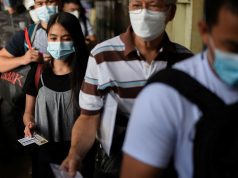
The Philippines is faring poorly in its sustainable development goals due to its high death rate of children under five years old.
Vicente Y. Belizario Jr., a professor and former dean of the University of the Philippines, shared this in a media briefing about the 5th anniversary of the First 1,000 Days Law (RA 11146). It was held in Makati City on Tuesday, October 3.
“Imagine children dying before the age of 2 or dying before the age of 5,” Belizario said.
“If we’re talking about sustainable development goals, the Philippines as a whole is not doing [well] on childhood mortality,” he added.
The Philippines is one of the countries that pledged to achieve the 17 Sustainable Development Goals (SDG) of the United Nations by 2030.
Under the “Good Health and Well-being Goal” or SDG 3, one of the targets of UN member countries is to “end preventable deaths of newborns and children under five years of age.”
Statistics from multiple sources show a dismal picture of the country’s progress in reaching this target.
Last January, the UN reported that each year, over 60,000 children in the country die before their fifth birthday and 60% of these are newborns.
Causes of death include premature births, intrapartum complications and infectious diseases.
Citing 2023 data from the Philippine Statistics Authority, Belizario said that approximately 31,000 children under five years old died in 2022 due to pneumonia.
Pneumonia is an infectious disease that could have been prevented by a vaccine.
Other recommended vaccines that prevent infectious diseases among kids and adults are:
- Rotavirus; Influenza
- Japanese Encephalitis
- Measles, Mumps, Rubella (MMR)
- Live Hep A
The 1,000 days law
The First 1,000 Days Law was made to provide free critical and routine immunizations of a child’s first 1,000 days or up to two years of age. It was signed into law in November 2018.
Despite these free services, Belizario said that vaccine uptake has been low from then until the present.
“Five years since RA 11146 was signed, vaccine uptake in the first 1000 days remains low even though policies are in place and vaccines are available. Even before the pandemic, chronic financial and societal factors have contributed to infants missing their vaccination schedules,” he said.
Factors contributing to low immunization
Fake news
Belizario and Fatima Gimenez, Immunization Committee Chairperson of the Philippine Pediatric Society, cited the proliferation of fake news and the decentralized public health system as the main reasons for the still low vaccine rates even with government policies in place.
Gimenez bared that the Dengvaxia controversy made a lasting imprint on Filipino families.
“I think the scare coming from that [Dengvaxia issue] really, as Dr. Belizario said, dropped down vaccine confidence to very low levels. And the issue is always safety,” she said.
“When you ask the mothers and even the more educated ones, you’d be surprised. They’d be referring back to that issue,” she added.
Dengvaxia is an anti-dengue vaccine developed by Sanofi.
Incidents of children’s deaths who took Dengvaxia jabs and the suspension of the country’s anti-dengue program back then triggered public fear and hesitancy to be inoculated.
RELATED: Impact of Dengvaxia mess seen after COVID-19 vaccine manufacturers’ call for indemnity deal
Belizario also shared another harmful rumor—vaccines as alleged “experiments” on kids.
The veteran doctor pointed out that vaccines have undergone rigorous testing before they are implemented by the World Health Organization.
The propagation of such fake medical-relation information can kill children, according to Belizario.
“It kills a program like the vaccination program. Worse, it might kill children because children don’t have access to the vaccines,” he said.
Decentralized public health
Local government units are the front-liners in providing important jabs to kids, says Belizario. Not all LGUs, however, provide the same quality of health services to their constituents.
“Note that in the government agencies or facilities, it is LGUs who are front-lining health service delivery. The Philippines has a decentralized health system. So, imagine local government units, cities and municipalities doing better than others,” he said.
Belizario thus described LGUs as a “big Christmas tree.”
To provide better healthcare to children and parents, the Department of Health (DOH) has to turn on “most if not all lights to actually give us the illumination that we need.”
Moreover, Gimenez also suggested that LGUs “educate” their communities on the free routine vaccinations they can avail of for their children.
Other factors
Belizario further listed other important factors leading to low rates of kids receiving immunizations, especially in far-flung areas:
- Distance of families to health facilities
- Economically deprived households
- Self-medication culture
- Supply issues of LGUs









